The European Space Agency (ESA) is taking significant steps in its mission to develop a sustainable space environment, guided by the Zero Debris initiative. In collaboration with the 3 Large System Integrators (LSI) (Airbus Defence and Space, OHB and Thales Alenia Space), ESA is supporting the industries’ transition towards Large Low Earth Orbit (LEO)satellite platforms designed not only to meet existing debris mitigation standards [ESSB-ST-U-007] but also to anticipate more stringent requirements for responsible space usage. As part of ESA’s broader goal to achieve a Zero Debris future by 2030, this platform evolution activity officially kicked off in June 2024.
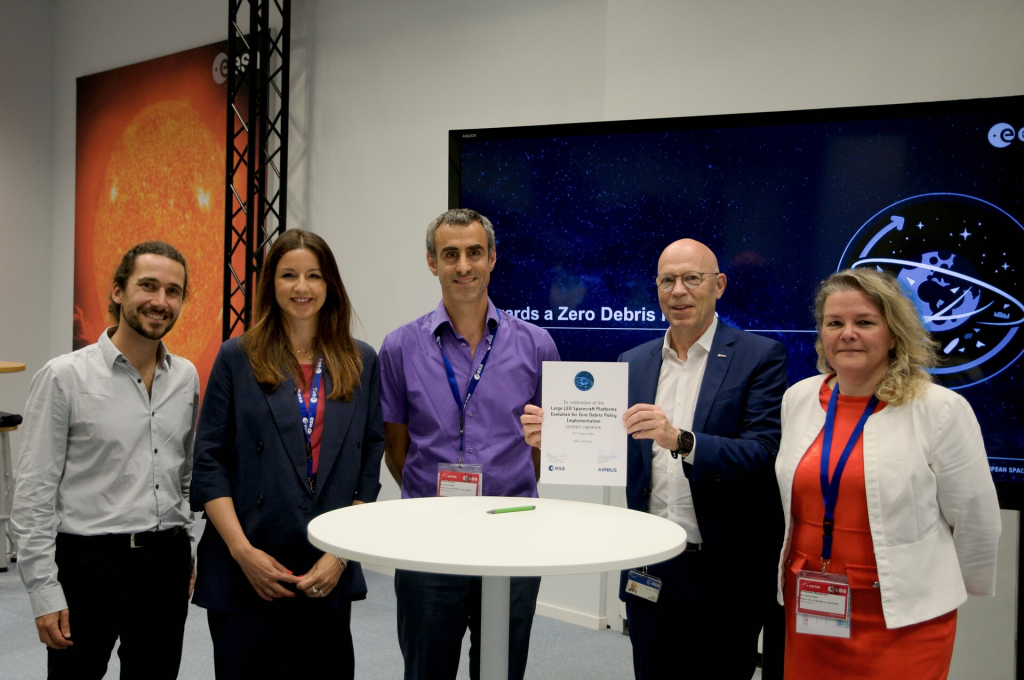
ESA – Contract signature for the development of zero-debris LEO satellite platforms
Objectives of the Zero Debris Platform Activity
The Zero Debris Platform activity aims to transform the way Large LEO satellites are designed, operated, and decommissioned. At its core, this activity has several objectives:
- Drive Technological Innovation: Encourage the adoption of technologies that support fully demisable and resilient platforms, ensuring that spacecraft can safely deorbit without being a hazard.
- Foster Industry Collaboration: Engage suppliers, integrators, and technology experts to create a collaborative ecosystem focused on Zero Debris goals.
- Set New Design Standards for Satellite Platforms: Lead the industry in setting and implementing new design principles, operational procedures, and disposal mechanisms, compliant with Zero Debris objectives.
Project Status and Upcoming Phases
The Zero Debris Platform activity kicked off in June 2024 and is currently in Phase 1, in the requirements review process. This phase focuses on defining the essential requirements and compliance criteria that satellite platforms must meet to align with ESA’s Zero Debris objectives. The platform activities will reach different milestones throughout its timeline :
- Phase 1 (2024-2025): The first phase is centered on reaching the System Requirements Review (SRR) level, establishing requirements for Zero Debris compliance. During this phase, the LSI’s will conduct detailed reviews, engage in supplier consultations, and refine technical specifications to guide platform design. This will lay the groundwork for developing fully demisable platforms and resilient systems. ESA, together with the LSI’s, are closely working with suppliers to identify technologies that can meet these requirements.
- Phase 2 (2026-2028): The second phase will aim for the Preliminary Design Review (PDR) level, focusing on the integration of these technologies into platform designs. By the end of Phase 2, ESA plans to achieve Technology Readiness Level (TRL) 6 for critical Zero Debris building blocks. Bringing suppliers on board during this phase is important to ensure all essential technologies are matured and ready for deployment to reach Zero Debris Goals by 2030.
Technical Objectives of the Zero Debris Platforms
ESA has outlined five technical objectives that should form a structured framework to guide Large LEO platform design and ensure that all aspects of Zero Debris requirements are met:
- Fully Demisable Low Earth Orbit (LEO) Platforms: The goal here is to develop platforms that fully disintegrate upon re-entry, reducing casualty risk on ground. This includes identifying suitable demise technologies, understanding their maturity, and integrating them into the platform design. This activity will assess how various demisable components impact satellite platform and mission performance and define principles to ensure a controlled fragmentation sequence, thereby enhancing safety.
- Modular Implementation of Controlled Re-entry: This objective focuses on creating modular architectures that allow satellites to conduct controlled re-entries, even if such an operation was not initially planned in the early design stages. The aim is to provide a flexible platform design that can adapt to various mission needs and implement controlled re-entry strategies with minimal impact on mission design. This involves trade-offs in propulsion and attitude control systems to ensure scalability across different mission types and sizes.
- System Resilience: By detecting and preventing potential failures that could compromise end-of-life disposal the goal here is to improve system resilience. It includes analyzing the robustness of the platform design against debris impacts and deriving and evaluating potential functional (e.g., redundancy schemes) and physical (e.g., shielding critical equipment, optimizing systems accommodation) solutions. Additionally, understanding and mitigating hyper-velocity impacts is another critical aspect, aiming to make the satellite more resilient to potential collisions.
- Mitigatory Operations for Safe Disposal: In cases of system failure, it’s essential to have measures in place to prevent debris generation. Implementing fail-safe operations for disposal, including autonomous or semi-autonomous systems that can trigger safe disposal even when the platform encounters malfunctions is the goal here. Additionally, safe modes and passivation techniques will be explored to minimize debris risks in failure scenarios.
- Design for Removal: Recognizing the possibility of future removal missions, this objective focuses on designing platforms that can be easily captured and removed by external servicing spacecraft. This activity will trade-off and benchmark designs to facilitate removal operations, establishing interface requirements and roadmaps for adapting these solutions to different platform types.
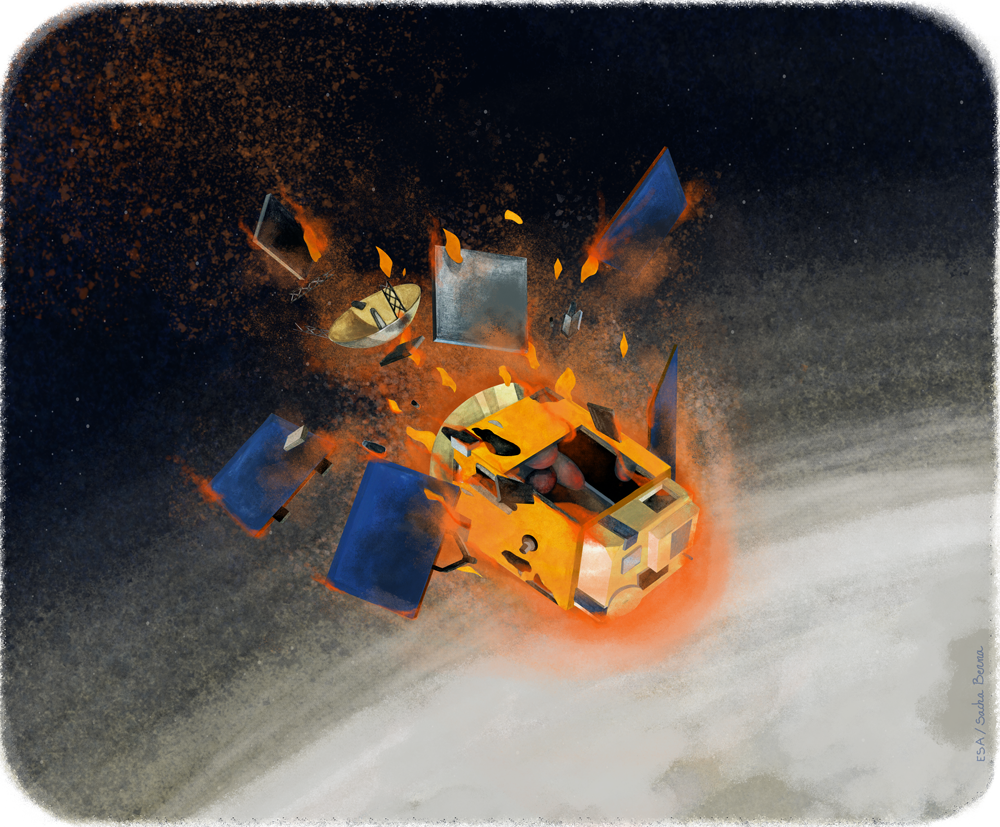
Satellite burn-up in Earths atmosphere
Industry Engagement and Upcoming Workshop
A key part of ESA’s strategy is to bring together suppliers, integrators, and other stakeholders to collaborate on the Zero Debris initiative. ESA will organise a dedicated Zero Debris workshop for the suppliers and LSIs on the 27th and 28th of January 2025. This event aims to kick-start discussions and align on technical requirements, with the goal of bringing innovative Zero Debris solutions to the platform activity.
Save the Date:
- 27th of January 2025 9-12h: Brief online presentations by each integrator and supplier to outline the integrators current needs and the suppliers’ latest technologies.
- 28th of January 2024 14-18h: Bilateral online meetings between integrators and suppliers, based on prior registration and selection, to discuss potential collaborations in more detail.
Further announcements regarding this workshop will soon be published on our LinkedIn Page.
By working together with industry and suppliers, ESA aims to bring meaningful advancements to space technology, ensuring that future missions align with a vision for responsible use of space.
Related Content:
- Follow our Clean Space LinkedIn Page
- Read more about the Zero Debris Platform activity
- If you are curious about the Space Debris Mitigation Requirements ESSB-ST-U-007
- Learn more about the Zero Debris initiative
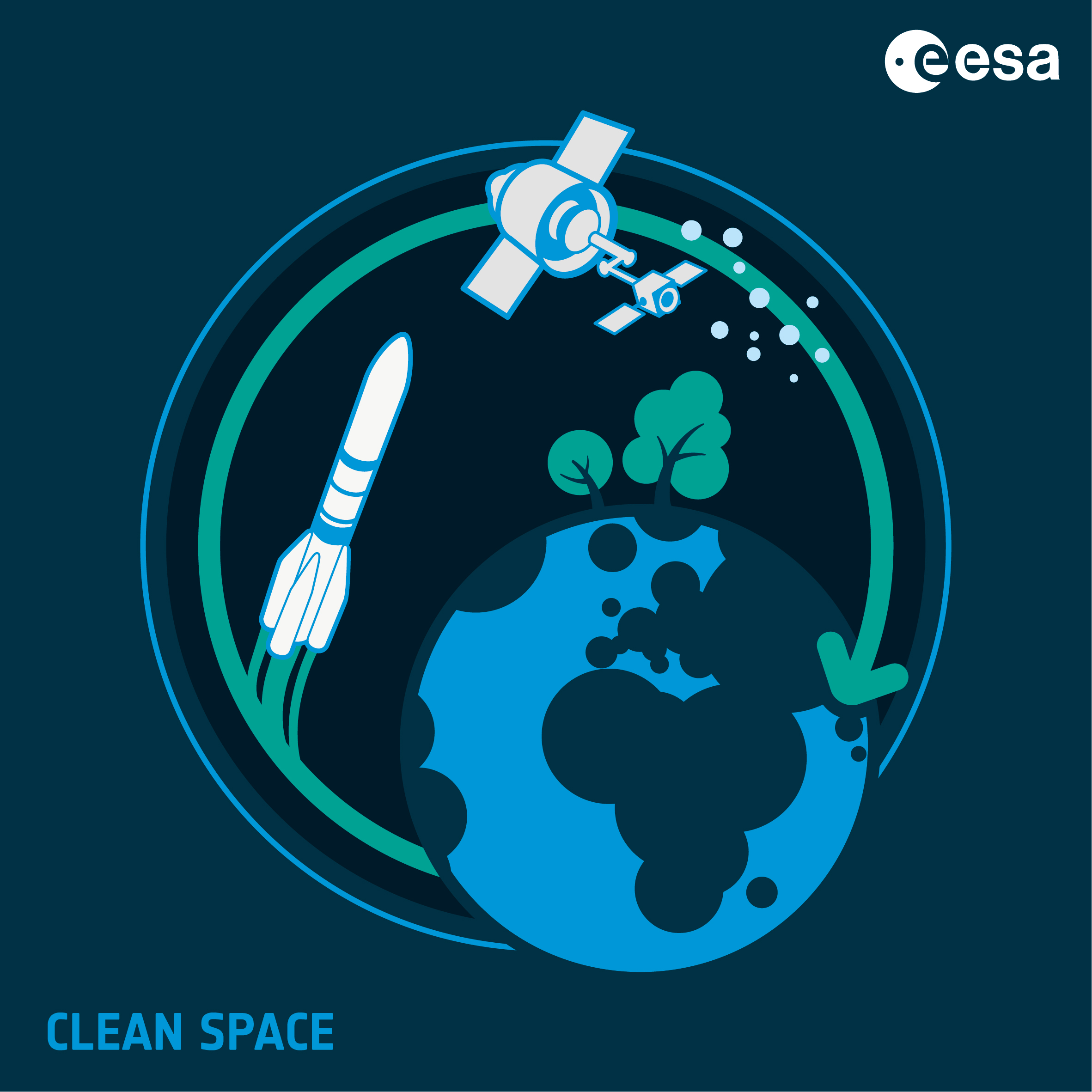

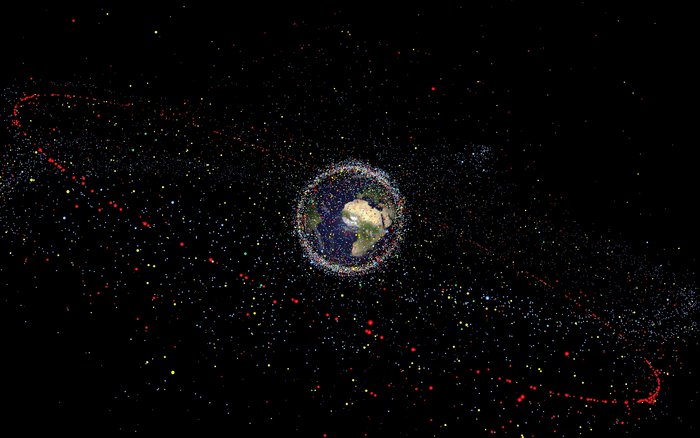
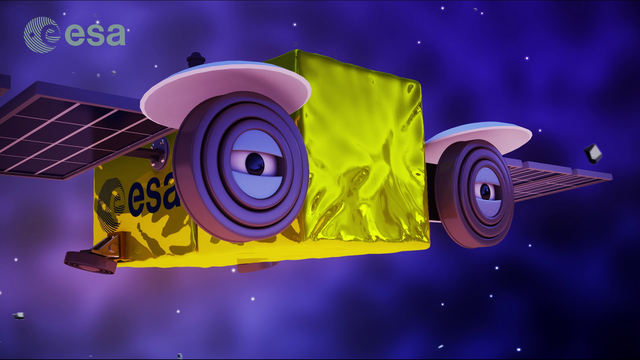
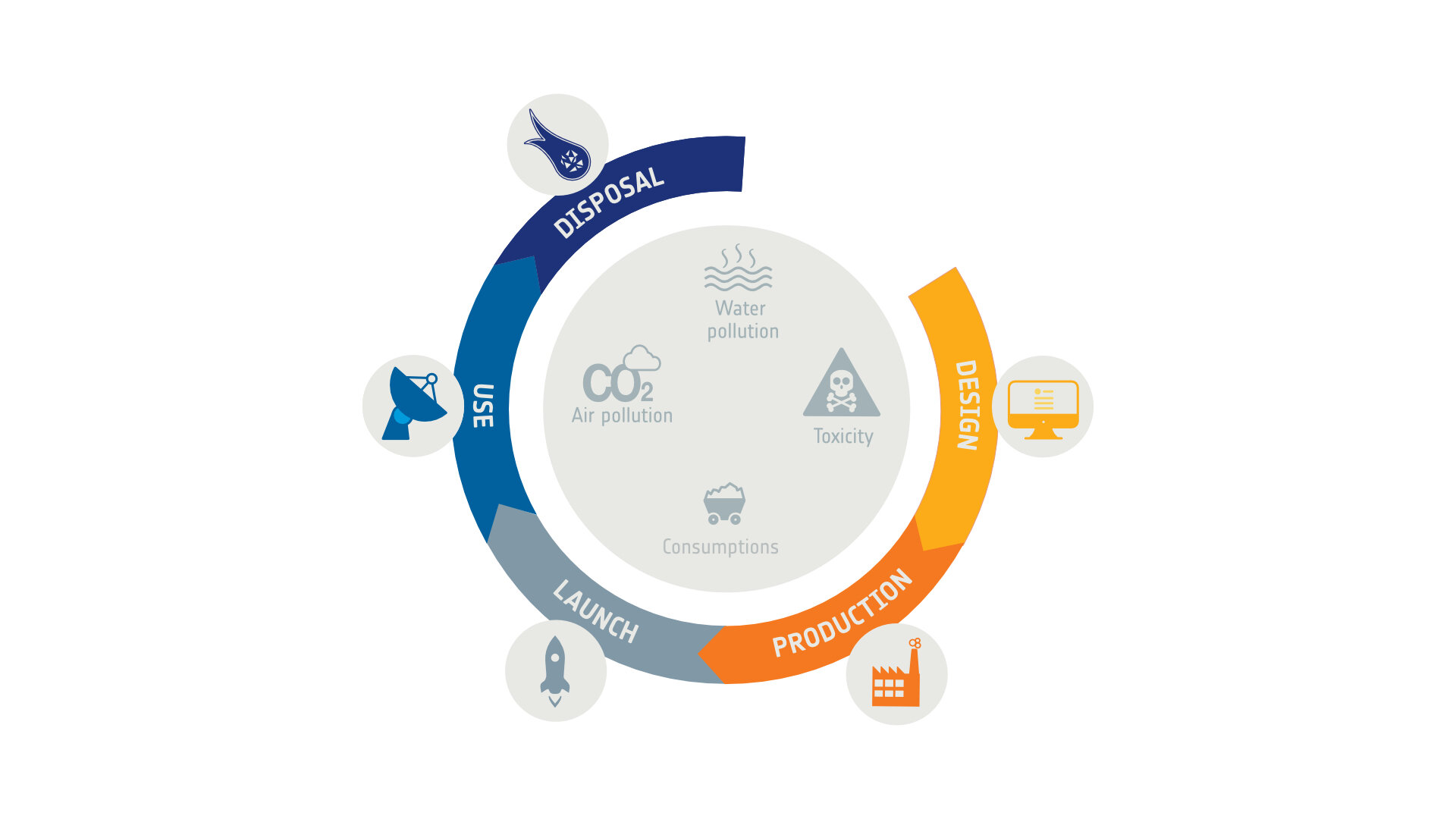
Discussion: no comments